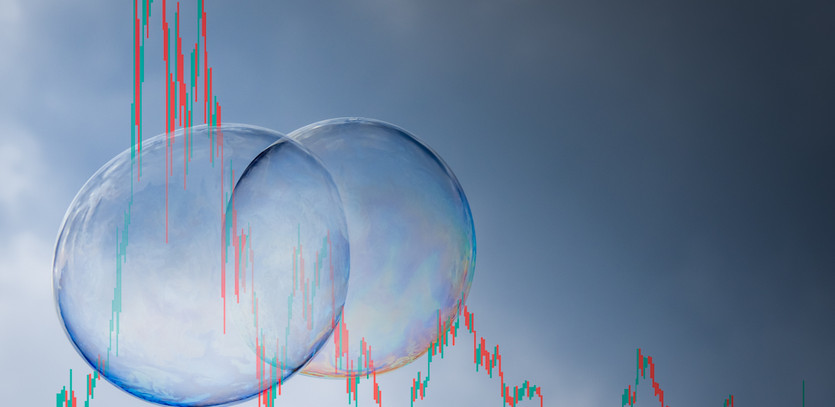Two Financial Titans Ringing Warning Bells
In the tumultuous sphere of global financial markets, there are few who command the respect and attention of investors quite like Jeremy Grantham and John Hussman. These formidable personalities, with their profound market insights and relentless pursuit of accurate forecasting, have distinguished themselves by accurately predicting market upheavals when the majority were blissfully unaware of impending disasters. Now, they come forth with a dire warning, both echoing sentiments of a substantial market reversal.
The Market Oracle: Understanding Jeremy Grantham’s Grave Forecast
Jeremy Grantham, a revered figure in investment circles, has often exhibited an uncanny ability to spot and evade potential market bubbles. His insightful evaluations and ability to peer through the clouded enthusiasm of the market have allowed him to amass a fortune while preserving his clients' wealth during market downturns. Currently, he draws ominous comparisons between contemporary market trends and notorious market bubbles of the past, specifically the 1929 and 2000 financial disasters. In his view, we stand on the precipice of a similar market collapse.
His sobering predictions are based on clear indications he has discerned in today's stock market trends, which, according to him, are red flags signalling an inflating bubble. Grantham pegs the likelihood of a market crash in the near future at a staggering 70%. Even the recent fervour around AI stocks, seen by many as a beacon of growth and investment, has not swayed his opinion. While acknowledging the transformative potential of AI in the long-term, he insists that the real impact of AI on market dynamics will only be realized after a traditional bubble burst. This, he warns, will trigger a recession and cause a slump in profit margins.
But Grantham does not merely predict doom; he also offers a way to weather the storm. He advises investors to turn their attention to dividend stocks, considered a safer bet in tumultuous market conditions. These investment instruments provide a steady stream of passive income, which can cushion the blow of a downturn. Among the options he highlights are Enterprise Products Partners (EPD) and Plains All American Pipeline (PAA), both of which carry a 'Strong Buy' rating and offer dividend yields that outpace inflation.
Taking a Closer Look: Enterprise Products Partners (EPD) and Plains All American Pipeline (PAA)
Enterprise Products Partners (EPD), a titan in the North American energy sector, possesses a sprawling network of hydrocarbon transport and storage assets spanning the continent. This forms the backbone of the region's energy infrastructure. With a market cap of $57 billion, EPD has consistently shown solid earnings despite the unpredictable energy market. This was evident in Q1 2023 when the company’s bottom-line results exceeded market expectations even amidst a slight dip in revenues. EPD's cash flow from operations also recorded a year-over-year increase of 3.5%. Importantly for dividend investors, the company's impressive cash flows comfortably cover its regular quarterly dividend payments, making it an attractive proposition. The stock currently yields a healthy 7.4%.
Plains All American Pipeline (PAA) is another heavyweight in the North American midstream sector, with a broad network of pipelines and storage facilities for transporting and storing crude oil and natural gas liquids. The company demonstrated positive earnings in Q1 2023, and its free cash flow remained robust at $823 million, easily covering the company's dividend payouts. In light of a recent increase in dividends and an appealing yield of 7.5%, PAA stands out as an attractive investment avenue, particularly in a market downturn.
A Second Perspective: John Hussman’s Stern Cautionary Note
Emphasizing the criticality of the situation, John Hussman, a revered authority on asset bubbles, mirrors Grantham's gloomy forecast. With a keen understanding of market dynamics and a history of prescient predictions, Hussman warns that the ebullience of the current U.S. stock market rally will inevitably "end in tears." The formulation of his cautionary note relies heavily on his acute analysis of towering valuations and unfavorable market internals, painting a future scenario of a drastic 64% collapse in the S&P 500. This precipitous descent, he argues, is an unavoidable corrective measure, absolutely essential to restore the market equilibrium.
His predictions are meticulously articulated through a series of crucial observations that provide a holistic picture of the impending market situation:
-
Combination of Risk Factors: Hussman identifies a lethal blend of elevated valuations, negative market internals, and severe market extensions. This deadly cocktail, in his view, is suggestive of a potential 'air pocket' or 'free fall' in the S&P 500. According to Hussman, the current overvalued market combined with a persistent disregard for risk indicates a future drop in stock prices.
-
Impending Market Correction: The exceptionally high market valuation observed presently implies a vertiginous 64% drop in the S&P 500. Hussman argues that this dramatic fall is not just probable, but also necessary to restore long-term prospective returns to more acceptable levels. He sternly warns that the market's gravity-defying valuations cannot be sustained indefinitely, and a course correction is not a possibility, but an inevitability.
-
Historical Milestone: Drawing upon the lessons of history, Hussman is convinced that the impending market collapse will engrave a significant milestone in the annals of U.S. market bubbles. His analysis places the predicted crash in the context of previous financial disasters, thereby highlighting the magnitude and seriousness of the impending market reversal.
-
Inevitability of the Bubble Burst: Reiterating the sobering reality, Hussman emphatically states that we are, without any doubt, in the midst of a stock market bubble. Even more gravely, he underscores that this bubble is destined to burst, resulting in a period of immense financial distress.
Hussman's bleak prediction might appear pessimistic to many. Still, it reflects his deep understanding of market dynamics, underlining the need for investors to heed these warnings and formulate strategies that can help mitigate the potential fallout of a significant market correction.
Hussman's predictions serve as a stark reminder of the perils of ignoring the fundamental principles of investing - value and sustainability. A market riding high on a wave of speculative fever, disconnected from underlying economic realities, is invariably set for a crash landing. The urgent alarms sounded by market gurus like Hussman and Grantham should be taken seriously, especially given their track record of accurately identifying such economic upheavals in the past. Ignoring these warning signs could lead to significant financial losses, reinforcing the age-old wisdom that "those who do not learn history are doomed to repeat it."
With the potential financial storm looming, it is time for investors to reassess their portfolios, temper their exuberance, and prepare to weather the impending storm. A conservative approach with a focus on solid fundamentals and diversified investments could help weather this period of economic turbulence.





